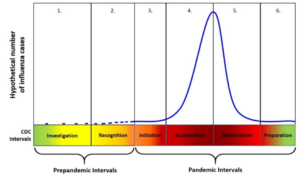
For many financial institutions, it has been a challenge to keep IT operations moving efficiently during this pandemic. Since community banks and credit unions are considered an essential business, they are required to continue to serve customers and members. This can be difficult when employees are unavailable or are forced to work remotely from their homes for the first time. Many financial institutions have questions about how to efficiently manage their remote workforce, while keeping the institution secure and employees, customers, and members safe.
To address these questions, Safe Systems’ Information Security Officer, Chuck Copland, VP of Compliance Services, Tom Hinkel, and Chief Technology Officer, Brendan McGowan held a live panel discussion last week covering ways financial institutions can manage banking IT operations during a pandemic. In this blog, we’ll cover a few of the top questions from the panel:
1. How would you suggest making sure that remote access vendors are vetted quickly but thoroughly?
For many financial institutions, remote access was limited before the pandemic because this technology either didn’t support critical functions or wasn’t a priority at the time. Now, remote access is very important to continue business operations efficiently, and many community banks and credit unions are evaluating options for larger scale use. To do this effectively, you first need to consider all of the risks associated with remote access and the potential impact on your organization. This helps you get a quick baseline of the controls you’re going to require, which will then inform your vendor review.
While some institutions may be in a rush to get remote access tools up and running, it is important to stick to your normal vendor review process and take the time to thoroughly evaluate third-party risk. If you do have to sacrifice the integrity of your normal due diligence process and cut some corners to choose a vendor quickly, understand that there will be a resulting change in your institution’s risk appetite, or your acceptable risk. Make sure this is updated and that the executive management team including the Board sign off on the your new risk appetite.
2. What are some lessons learned about remote access for financial institutions during this pandemic?
It can be difficult to determine which remote access tool fits best with your institution’s unique security and regulatory needs. First, you should identify the best way for your staff to access the network whether it’s through a virtual private network (VPN) or an application for remote access, like a telecommute remote control tool. A VPN is a piece of software that lives on a computer that your user has at home — preferably a bank or a credit union asset and not their personal home PC.
When a user connects through a VPN tunnel, typically the computer gives access to the local network at the institution. With telecommute remote control tools, like LogMeIn and Splashtop, the user is working from a local computer at the office. These tools limit the abilities of the computer from interacting with the institution’s local network, often, making it a secure option for organizations that don’t want employees to have direct access to the network. Because each tool achieves a different goal, you will want to determine exactly what your team needs to conduct remote work efficiently, effectively, and securely.
There are also several collaboration tools and meeting tools to consider which can help different teams within your institution communicate and collaborate on projects internally and meet with each other or speak with external users outside of your organization.
What are you hearing from examiners? How are exams continuing during the pandemic?
We’re seeing that all examinations have either been pushed back to a later date or changed to a remote visit. In the climate that we are in, examiners are expecting institutions to make accommodations to customers that may be negatively affected by this pandemic and ensure they have access to other critical products and services.
But what happens when the dust settles, and we go back to a more normal set of circumstances? What will examiners expect then?
Most likely, we expect them to be looking for a mature “lessons learned” document that financial institutions create to show what they have learned over the course of this particular pandemic event. We can certainly see guidance changes coming out of this, with regulators having a new set of expectations for financial institutions going forward. Right now, we are all concerned with just getting through this challenging time but all financial institutions need to document what they are doing and the lessons they have learned along the way. They also need to create a report for the Board and the executive management team recommending any necessary changes to mitigate the impact of a pandemic, should one happen again in the future.
If you’d like to find out what other questions were answered during the live panel, watch our recorded webinar, “Ask Our Experts: Managing Banking IT Operations During a Pandemic.”




